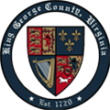Individuals with knee pain and/or knee weakness too often give up on exercise, thinking that it might harm, rather than improve, their condition. Nothing could be further from the truth. Properly selected and performed exercises can improve many knee conditions, by strengthening the muscles connected to the knee.
Two things to do when you have knee pain and weakness are to:
- Strengthen the weak muscles around the knee, and
- Stretch any tight muscles.
Which muscles need to be strengthened and stretched?
The muscle group on top of the thigh is called the quadriceps. Connected to the kneecap and the leg bone below the kneecap, the quadriceps straighten the knee and is the muscle you use when standing up from a chair or going up stairs.
The muscles on the back of the thigh are called the hamstrings. They bend the knee. For the knee to be properly 'balanced,' both groups need to be strong. One of the calf muscles (gastrocnemius) also spans the back of the knee joint and helps balance the knee.
Isometric Knee Exercises
If you have a great deal of knee pain going up stairs or standing up from a chair, or if your knee is swollen or 'hot', you should do isometric exercises. In this type of exercise, the muscle tightens, but the joint does not move. These exercises avoid stressing the joint, while strengthening the muscles.
PRECAUTION: If you have high blood pressure, you should check with your doctor before doing isometric exercises. It is important to breathe during the exercise; we have a tendency to hold our breath when we are doing isometric exercises. This can increase the pressure around your heart. It is best to inhale before the effort portion of the exercise, and to exhale during the effort portion. DO NOT HOLD YOUR BREATH!
- Quadriceps Set: Sit on the edge of a chair or lie down with your knee straight. Tighten the muscle on top of your thigh by straightening your knee as much as you can. Place your hand on top of your thigh to feel the muscle tighten. Hold the muscle tight for a count of 5. Relax and repeat 5-10 times. Try to do the exercise with each leg several times throughout the day.
- Straight Leg Raise: Lie flat on your back on either a bed or on the floor. Bend one knee, placing your foot flat on the bed. (This helps to stabilize your pelvis and protects your lower back.) Straighten the other knee. Tighten the muscle on the top of the thigh of the straight leg and slowly raise the entire leg 12 to 18 inches off the bed. Slowly lower the leg and relax. This exercise should only be done if you can keep the small of your back pressed against the bed with the abdominal muscles gently tightened. Repeat this exercise until you can do it 10 times, and then progress to doing 3 sets of 10 repetitions with a 1 to 2 minute rest between sets. This will improve its strength. Repeat with the other leg. Remember to bend the opposite knee, placing the foot flat on the bed. This exercise is isometric at the knee, but not at the hip.
- Hamstring Set: Lie on your back resting your heel on the bed, or sit at the edge of your chair, resting your heel on the floor. Bend the knee slightly. Dig your heel down into the bed or the floor squeezing it toward you, but don't allow it to move. You should be able to feel the muscles on the back of your thigh tightening. Hold for a count of 5. Repeat 5-10 times with each leg several times throughout the day. Be sure to breathe.
- Seated Combination Quadriceps/Hamstring Set: Seated in your chair, cross your right ankle over your left. Your left foot is flat on the floor. Push back with your right ankle against your left. You can feel the muscle on the back of your right thigh tighten. Add a forward press with the left ankle against the right, and you will feel the muscle on the top of your left thigh tighten as well. Hold for a count of 5. Be sure to breathe. Repeat several times, and then switch legs. PRECAUTION: Avoid this exercise if it aggravates your knee pain.
- Short Arc Quadriceps: Although this exercise is not completely isometric, it is often tolerated well when the knee is painful because the knee is exercised only in a small part of its range of motion. Lie on your back, and put a 1-2 pound coffee can or a rolled up towel bolster measuring 3 to 6 inches in diameter under your knee. Straighten the knee. You will feel your knee pushing down into the bolster as your heel lifts up and the quadriceps muscle on the front of your thigh tightens. Hold for a count of 5. Relax. Repeat several times with each leg.
Sit and Be Fit is a non-profit organization committed to healthy aging advocacy. We believe everyone has the right to feel good and age well. We empower people to improve their lives through safe, effective, media-based health and wellness programming.

